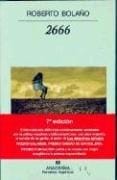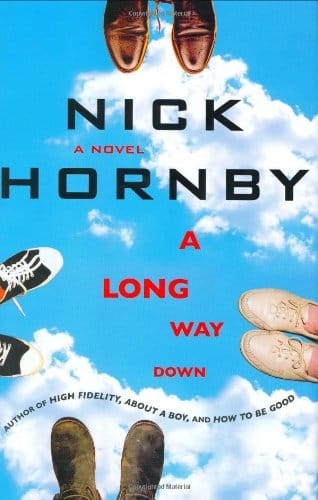Exploring Roberto Bolaño’s Monumental Novel "2666"

Introduction: Why Roberto Bolaño’s 2666 Still Matters
Roberto Bolaño’s 2666 is more than a posthumously published novel; it is a modern literary landmark that continues to captivate readers, critics, and scholars across the globe. First released in 2004, this sprawling work of fiction stretches across continents, decades, and a vast cast of characters. Its genre-blurring style — part mystery, part historical fiction, part philosophical inquiry — has earned 2666 a place among the twenty-first century’s most influential books. In this article, we will delve into the novel’s structure, themes, and cultural impact while explaining why it remains essential reading for lovers of contemporary literature.
The Five-Part Structure: A Quick Overview
2666 is famously divided into five interconnected parts that Bolaño originally intended to publish separately. Understanding the architecture of these sections is key to unlocking the novel’s layered narrative.
The Part About the Critics
This opening segment follows four European literary scholars obsessed with an elusive German author, Benno von Archimboldi. Their academic quest takes them from conferences in Europe to the dusty streets of Santa Teresa, a fictional Mexican border town modeled after Ciudad Juárez.
The Part About Amalfitano
In the second part, the narrative shifts to Óscar Amalfitano, a Chilean philosophy professor living in Santa Teresa. Haunted by personal trauma and philosophical doubt, Amalfitano’s story adds a deeply introspective layer to the novel while foreshadowing darker events.
The Part About Fate
Here we meet Quincy Williams, known by his journalistic pseudonym “Oscar Fate.” Sent from New York to cover a boxing match in Santa Teresa, Fate becomes entangled in local horror stories about a series of femicides, introducing the reader to the novel’s central crime motif.
The Part About the Crimes
This is the longest and most harrowing section, offering a meticulous, almost documentary account of brutal murders of women in Santa Teresa from 1993 to 1997. Bolaño’s clinical descriptions force readers to confront real-world violence that mirrors the actual tragedies in Ciudad Juárez.
The Part About Archimboldi
The final segment turns back to Benno von Archimboldi, revealing his origins, wartime experiences, and literary career. It circles the narrative back to the novel’s beginning, weaving together the disparate threads and leaving readers with haunting unanswered questions.
Major Themes in 2666
The Nature of Evil
Throughout 2666, Bolaño interrogates the roots and manifestations of evil, from the murders in Santa Teresa to the atrocities of World War II. The novel suggests that evil can be systemic, banal, and disturbingly mundane, challenging readers to reconsider their understanding of moral culpability.
Art and Obsession
The critics’ pursuit of Archimboldi, Amalfitano’s fragile sanity, and Fate’s impulsive curiosity all highlight how art and obsession shape human behavior. Bolaño’s reflection on literature, authorship, and the power of storytelling permeates every page.
Borderlands and Globalization
Santa Teresa stands at the crossroads of economic exploitation, migration, and violence—an emblem of global borderlands where disparate worlds collide. Bolaño uses this setting to critique neoliberal policies and the social conditions that breed inequality and brutality.
Fragmentation of Narrative
The novel’s shifting points of view and nonlinear approach mirror the disorienting experience of modern life. This fragmentation invites readers to assemble their own interpretations, embodying Bolaño’s belief in active readership.
Literary Techniques That Make 2666 Unique
Polyphonic Storytelling
Bolaño employs multiple narrators and styles, from academic satire to noir-like reportage. This polyphony broadens the narrative scope, giving each part its own distinct voice while maintaining thematic coherence.
Metafictional Elements
The hunt for Archimboldi is a meta-critique of literary criticism itself. Bolaño often blurs the lines between fiction and reality, reminding readers that narratives are constructed and subjective.
Blending Genres
By fusing detective fiction, war narrative, and philosophical treatise, Bolaño resists simple categorization. This genre hybridity keeps readers engaged while reinforcing the novel’s commentary on the complexity of truth.
Cultural Impact and Critical Reception
Since its release, 2666 has garnered numerous accolades, including the National Book Critics Circle Award for Fiction. Critics have hailed it as Bolaño’s magnum opus, praising its ambition and unflinching examination of violence. Universities worldwide teach the novel in courses on Latin American literature, gender studies, and postmodern narrative techniques.
Yet the book is not without controversy. Some readers find the graphic depictions of femicide exploitative, while others argue they are necessary to bear witness to real-world injustices. This ongoing debate underscores the novel’s power to provoke meaningful discourse.
Reading Tips for First-Time Explorers of 2666
At nearly 900 pages, 2666 can seem daunting. Here are a few strategies to enhance your reading experience:
- Read each part as its own novella, pausing for reflection before moving on.
- Keep a character list; the sprawling cast can be challenging to track.
- Consult maps of Mexico and Europe to anchor the novel’s geographic breadth.
- Join an online discussion group or book club to share insights and interpretations.
Influence on Contemporary Writers
Bolaño’s fearless exploration of violence and structural inequality has inspired authors like Valeria Luiselli, Yuri Herrera, and Marlon James. His stylistic daring encourages younger writers to cross genre boundaries and address global crises with unflinching honesty.
Adaptations and Multimedia Extensions
Though no definitive screen adaptation exists, several filmmakers have expressed interest in bringing 2666 to film or television. In 2016, the novel was adapted for the stage by the Goodman Theatre in Chicago, receiving critical acclaim for capturing the book’s breadth in a single evening of immersive theater.
Conclusion: The Enduring Legacy of 2666
Nearly two decades after its publication, 2666 continues to resonate as a profound meditation on evil, art, and the human condition. Roberto Bolaño’s final masterpiece challenges readers to confront uncomfortable truths while celebrating the transformative power of literature. Whether you are a seasoned Bolaño aficionado or a curious newcomer, diving into 2666 promises a reading journey that is as intellectually rewarding as it is emotionally haunting.
